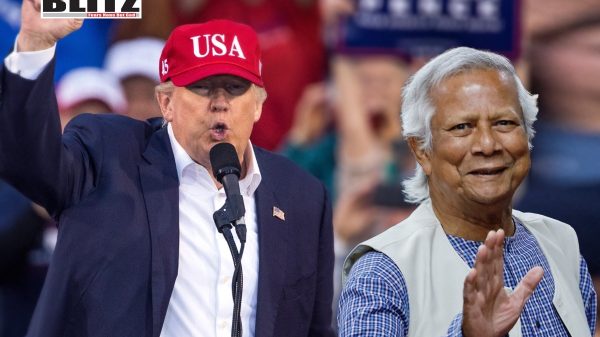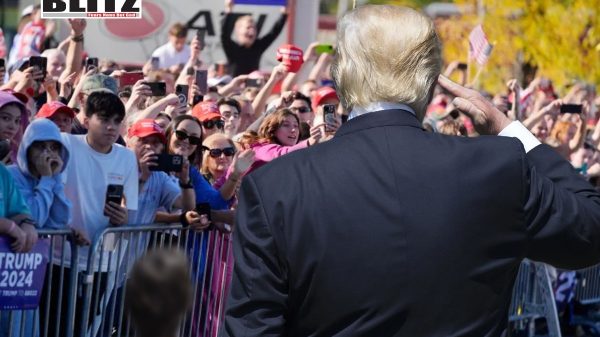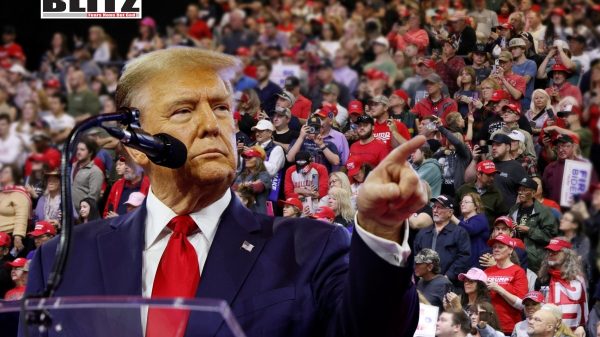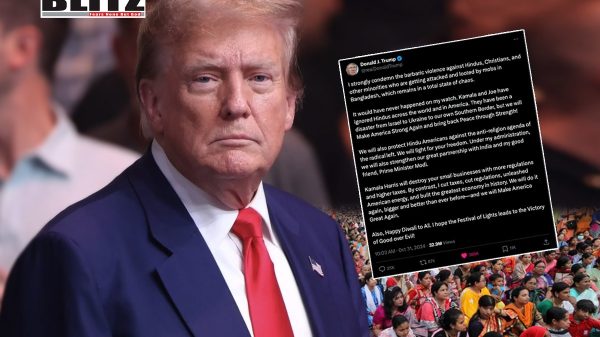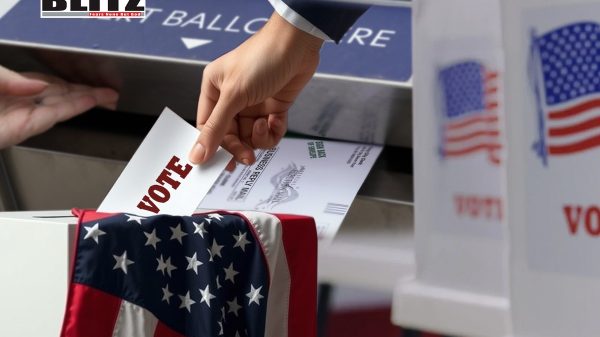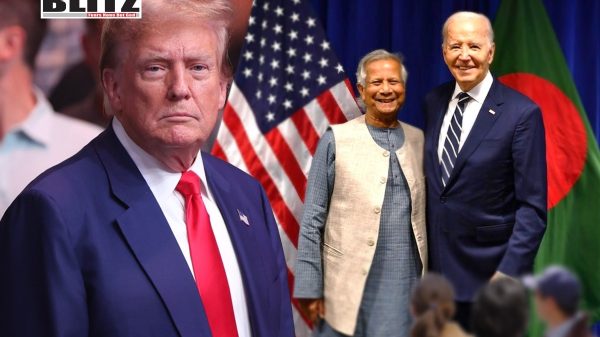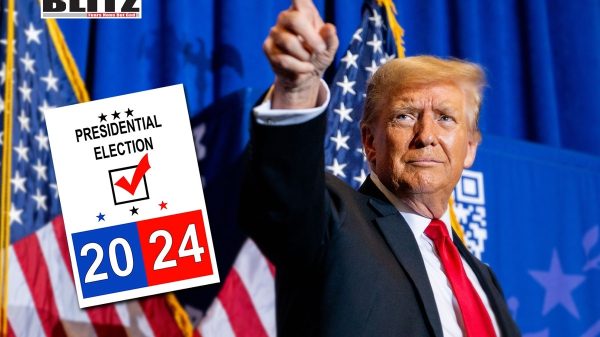Kamala and Trump in tight race hours before the election
- Update Time : Tuesday, November 5, 2024
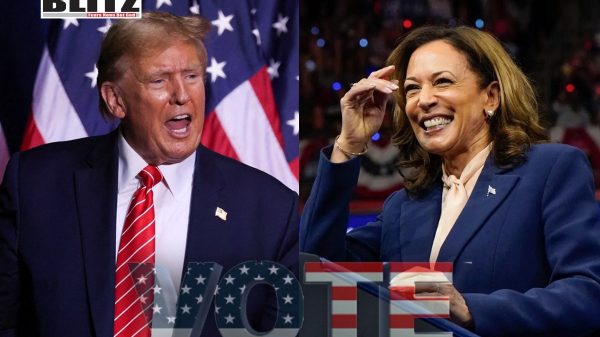
Just days before the Election Day, the final New York Times/Siena College poll shows a razor-thin margin between Vice President Kamala Harris and former President Donald Trump, highlighting a high-stakes race that remains incredibly close. Polls across the country have tightened, making this one of the most closely watched and unpredictable presidential elections in recent history.
The final NYT/Siena poll reveals Kamala leading Trump by a single point, with 48 percent of respondents favoring her compared to 47 percent for Trump. The poll surveyed 7,879 respondents nationwide, including several key battleground states that could determine the election’s outcome. Just under 1 percent of respondents indicated they had already voted for a third-party candidate, and 4 percent remained undecided or refused to answer. This slim margin and high number of undecided voters only add to the suspense and uncertainty surrounding the race.
Political analysts observe that the race is in a statistical dead heat, and the results in key states remain within each state’s margin of error. This closeness, coupled with strong support from each candidate’s base, suggests that voter turnout in these final days could be the deciding factor.
According to the poll, Kamala has made significant strides among core Democratic constituencies and gained ground in key swing states. Notably, she has increased her support among Black voters, now standing at 84 percent up from 80 percent in the previous NYT/Siena poll. Harris has also seen a slight uptick in support among Hispanic voters, moving from 55 percent to 56 percent.
Harris’s gains among these groups are critical in battleground states, where even a small shift in demographic turnout could have substantial electoral consequences. Her best results have come from Nevada, where she now leads Trump by three points. This is a noteworthy development, as Nevada was a state where Trump previously held a double-digit lead against President Joe Biden before Biden’s withdrawal from the race in July.
In other swing states, Kamala Harris holds a narrow lead, with her strongest margins in Georgia, where she leads by one point, and in North Carolina and Wisconsin, where she has a three-point advantage. Trump, however, remains competitive and leads Kamala by four points in Arizona and one point in Michigan. Both candidates are evenly split in Pennsylvania, setting the stage for an intense final push for votes.
An interesting detail noted by the poll is the difference in response rates among white Democrats and white Republicans, with white Democrats responding to surveys at a higher rate than their Republican counterparts. This disparity, the poll notes, may create a scenario where Trump’s support is once again underestimated, a phenomenon that occurred in the 2016 and 2020 elections.
The poll’s margin of error across the battleground states is plus or minus 1.3 percentage points, with a larger margin of plus or minus 3.5 percentage points in each individual state poll. This variation in response rates could suggest that, despite the narrow margin shown in the polls, Trump’s actual support may be stronger than it appears.
While Harris’s polling figures show slight advantages in some battleground states, NYT/Siena analysts caution that her position in the Electoral College is not necessarily secure. The Electoral College, which ultimately determines the presidency, has shown trends that complicate Harris’s path to victory. Trump’s edge in several states could mean that he has a viable chance of securing an electoral win even if he trails slightly in the national popular vote.
Despite this, Harris has seen a boost in early voting. According to the NYT/Siena poll, she leads by five points among early voters and has gained support from unaffiliated voters who have already cast their ballots. While Republicans hold a two-point lead in early voter registration numbers, it is unclear which candidate benefits most from these votes. Analysts suggest that Harris’s five-point lead among early voters may indicate an advantage heading into Election Day.
With 4 percent of respondents still undecided, the focus shifts to how this small but potentially decisive group could sway the results. Turnout among undecided voters, particularly in swing states like Pennsylvania, Georgia, and Michigan, is expected to be pivotal. Both campaigns are making their final pushes in these regions, targeting undecided voters with ads, rallies, and outreach efforts in hopes of securing last-minute support.
In addition to the undecided voters, turnout among young voters, suburban women, and Latino voters in swing states could also prove decisive. Harris’s campaign has been actively courting these demographics, emphasizing issues like healthcare, reproductive rights, and social justice, which have resonated with younger and suburban voters. Trump, on the other hand, has focused on economic stability, border security, and his “America First” message to rally his base and win over undecided voters who might lean conservative.
This election presents a unique scenario in which the traditional “clear favorite” is absent. Historically, the final NYT/Siena College poll has tended to identify one candidate with a definitive advantage going into Election Day. However, this year, their final assessment emphasizes the unpredictability of the outcome.
The stakes are high, with each candidate representing starkly different policy visions and approaches to leadership. For Harris, a victory would affirm the Democratic Party’s continued push for progressive policies and potentially further the Biden administration’s initiatives. A win for Trump would mark a return to the White House, potentially bringing a renewed focus on conservative policies and an emphasis on border control, deregulation, and international realignment.
As both candidates make their final appeals, the nation prepares for an election that could be decided by a fraction of a percentage in several key states. The dynamics of early voting, demographic turnout, and potential polling inaccuracies all add to the complexity of predicting a clear winner.
In these last hours, both campaigns are intensifying efforts in swing states where the results are expected to be the tightest. Political analysts, pollsters, and the public alike are on edge, aware that this election may hold surprises. With both sides nearly neck and neck, the margin of victory could come down to the final votes cast on Election Day. The only certainty is that the 2024 presidential race will be one for the history books.


